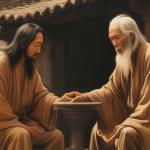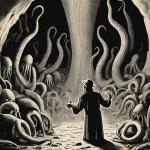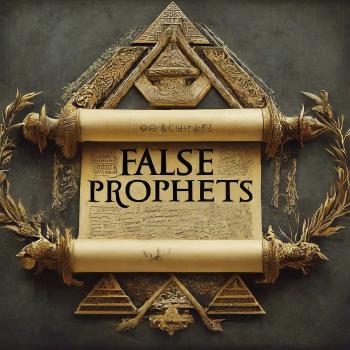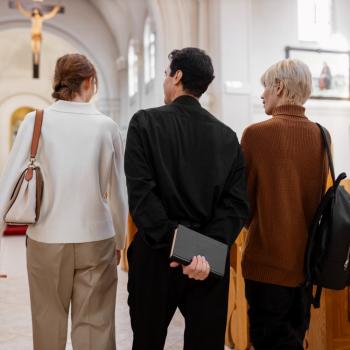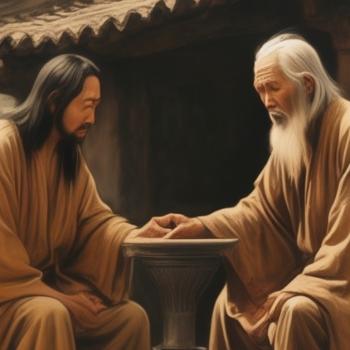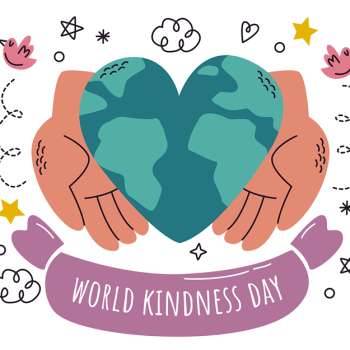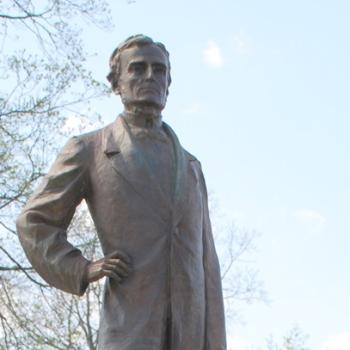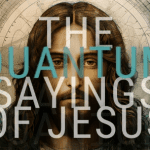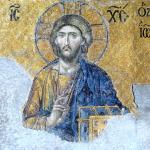Religious killjoys, terrified of anything non-Christian, warn of Easter’s Pagan origins. Yet, we can reconcile and honor both traditions.

Most Jesus followers know someone afraid of anything impure that might creep in from outside Christendom. These are the hyper-religious types who insist you can get a demon from playing Dungeons & Dragons. They’re certain that their kids will become witches if they read a Harry Potter book. And they love to debunk fun Christian holidays by telling you about their pagan origins. But, did you ever stop to think that the Pagan origins of Christian holidays actually enhance their meaning?
The Meaning of Easter
In Christianity, Easter is all about the resurrection of Jesus. It’s the celebration of the Lord of Life bringing victory over death. Today, Christians celebrate Resurrection Day with Easter baskets full of candy and colored eggs. Children hunt for plastic eggs filled with toys and sweets, as well as the old-fashioned hard-boiled eggs, dyed in pastel colors. But Christianity hasn’t always had these traditions. First and foremost, it was about Jesus.
The Dating of Easter
The earliest believers celebrated Jesus’ resurrection weekly, by replacing the Jewish Sabbath (seventh day) with the Lord’s Day (first day) as their primary day of worship. In addition, the Church remembered the Death of Christ in association with Passover (14th day of the Hebrew month of Nisan). In fact, the first denominational schism in the church took place because Christians couldn’t agree on whether to celebrate Easter on the 14th, or the Sunday following. As a result, the Quartodeciman Controversy led to the divide between the Roman and Orthodox churches.
Life from the Dead
Regardless of the dates, all Christians saw Easter as connected to the Hebrew calendar in one way or another. For them, Jesus was the fulfillment of Passover. The resurrection was inextricably linked to his passion and redemptive death. Nobody ever thought to celebrate Easter without observing the austerities of Lent and Holy Week. Easter was the culmination of a long season when believers focused on the meaning of Christ’s death. Easter was the final triumph—life from the dead. Early Christians greeted each other with the Greek expression, “Christos anesti—Christ is risen!”
As Christianity Expanded
So, how did a celebration of Jesus as the Passover Lamb and Messiah become a holiday for rabbits and eggs? It all started as Christianity expanded outside of its native Israel. When Christian missionaries moved into new lands, they had to figure out how best to convert the people. Sometimes they contended against local beliefs and religions. Other times, they adopted local customs and even incorporated indigenous beliefs into Christianity. The result is a Western Christianity with practices and holidays that appear greatly changed from the original Jesus-cult of first-century Palestine.
The Wheel of the Year
In the first article of this series, I wrote about the Christian appropriation of Pagan festivals:
“When Roman Catholicism entered the unchurched lands of Western Europe, it Christianized the indigenous festivals to facilitate the conversion of Pagans. Ostara was renamed Easter. Beltane was transformed into May Day with its fertility pole. Litha corresponds to the Roman Catholic Solemnity of the Birth of John the Baptist. Lughnasadh, the festival of first harvest, became Lammas, or the Loaf Mass. Mabon, the feast of the second harvest, became the Feast of Matthew the Apostle. The Church turned Samhain into All Saints’ Day. We are more familiar with the day before—All Hallows Eve, or Halloween. Christmas eclipsed Yule to such an extent that many think they are synonymous. And finally, Candlemas replaced Imbolc.”
Adapting Ostara traditions, modern Easter celebrations adopted a Pagan flair. Let’s see how Pagans observed the Spring Solstice.
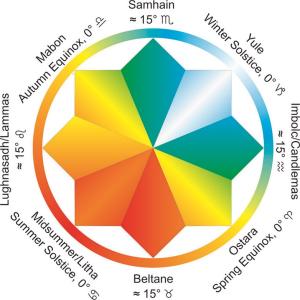
Ostara, the Spring Solstice
As the beginning of Spring, Ostara was always about new life springing from death. Rebecca Bell and Eleanor Tremeer write:
“Eostre — sometimes known as Ostara, is the Germanic goddess of dawn, and is celebrated to bring fertility, renewal and rebirth, however her origins and worship are faded in history. It has been theorised, as early as the 8th Century by St Bede, that this Teutonic goddess was the foundation for Spring Equinox celebrations…Many deities and spirits around the world are associated with the Spring Equinox — which is unsurprising given the importance of fertility to all living things. We have Mithras from the Romans, and Osiris from ancient Egypt, who both share an all too familiar story of resurrection on the Spring Equinox.”
So, it was natural for Christianity to associate Jesus’ death and resurrection with the death and resurrection of Pagan deities. With good reason, many Neopagans resent the Christian appropriation of their traditions. Here are some of those Pagan traditions Christians adopted:
The Easter Bunny and Colored Eggs
Derek Welch writes about the Pagan origin of Easter eggs:
“The bunny, because of its high reproductive rate, was seen as Ostara’s sacred animal. She also gave a special bunny the power to lay multicolored eggs. Children would also present eggs to the goddess to as a sign of fidelity. Ostara was so delighted by it she would have her bunny minions return the eggs in baskets to the children. Sounds pretty familiar. How did the ritual get adopted by Christianity? First, priests who were trying to convert pagan children would offer money for the eggs, which evolved into the finding of eggs for treats – Easter egg hunts. It also seemed to be a tactic used for conversion. Instead of trying to force an entirely new system of belief, they would modify existing rituals to relate them to Christianity, such as Christmas.”
For this reason, many Christians hold that Jesus’ followers should have nothing to do with the Easter Bunny and Easter eggs. Some even go to the extent of refusing to call the holiday “Easter,” preferring the original name, “Resurrection Day.” Should Christians avoid these Pagan-inspired traditions? Or is there something redemptive in this connection to the non-Christian world?
Objections to the Easter/Ostara Connection
Two categories of people insist that Christianity should disentangle itself from its Pagan connection. Segments of the Christian and Pagan communities lament the linking of these two traditions. But I’ll tell you what’s good about them being bound together.
First, many Christian conservatives claim that any relationship to Paganism is dangerous. These are those who worry about demons in the shadows, ready to pounce on their children and lead them to hell. As a universalist, I reject the idea that influences from other religions will lead to eternal damnation. Jesus is Lord of All, or he’s not Lord at all. Therefore, since none will be lost, we don’t need to worry about the influence of other religions.
Second, many Pagans wish that Christians would disconnect themselves from the Ostara traditions. Do you know how some angry Christians complain that the true meaning of Christmas gets lost in capitalism and consumerism? Similarly, many Pagans object to their holidays being coopted by Christianity, causing them to lose their Pagan heritage. Yet, Paganism is a broad family of religions that has never felt it had an exclusive claim. Throughout history, Pagans have borrowed freely from each other. If Oscar Wilde was right when he said, “Imitation is the sincerest form of flattery that mediocrity can pay to greatness,” then Pagans have nothing to fear from Christians borrowing from them.
Reconciling Easter and Ostara
These days, we hear a lot about the dangers of cultural appropriation. And that’s a good thing. There’s a big difference between cultural appreciation and cultural appropriation. Appropriation is stealing, in conjunction with disempowerment. Truthfully, this is what happened when Christianity stole from Pagans, centuries ago. As I said, Neopagans have good reason for resenting Christian appropriation of their religious and cultural symbols.
But the fact is, that damage has been done and there’s no undoing it. The key isn’t found in de-paganizing Christianity. Neither is it found in de-Christianizing Neo paganism(because Neopagans borrow from Christianity, too). The key is in recognizing the Universal Web that unites all of us.
We must learn cultural appreciation. And we must grow in our understanding that, no matter what symbols and traditions we use, we are one people on one planet. If we can learn to share without stealing, borrow without belittling, and honor one another in the process, we can work toward reconciliation.
What Ostara Adds to Easter
Ostara adds to the meaning of Easter. Whereas Easter celebrates one (divine) man’s return to life from death, Ostara affirms the resurrection of all creation. This move from death to life is as certain at the Spring Equinox. Christianity could benefit from that emphasis.
This thread of universal restoration exists within the Bible. Colossians 1:20 says that God was pleased “through him [Christ] to reconcile to himself all things, whether things on earth or things in heaven, by making peace through his blood, shed on the cross.” Revelation 21-22 displays this renewed heaven, earth, and all creation where Eden is restored. In its emphasis on the natural world, Ostara gives a foretaste of that renewal of all humanity and all creation.
Easter is about more than Jesus’ death and resurrection. It is also about the promised resurrection of all things. Bunnies, eggs, and other nature-based symbols of Easter represent that hope of universal renewal. The Spring Equinox is the perfect time to celebrate that!
Reconciling Christians and Neopagans
The Wiccan Rede says, “An it harm none, do as thou wilt.” This means Neopagans are free to borrow from any tradition they like, as long as it is done without harm. It means you can do whatever you want—as long as you honor others in the process.
For the Christian, Ephesians 2 talks about Jews and Gentiles being reconciled. This same principle applies to reconciling Christians and Neopagans. Verses 14 and 17 say, “For he [Jesus] himself is our peace, who has made the two groups one and has destroyed the barrier, the dividing wall of hostility… He came and preached peace to you who were far away and peace to those who were near.” If we’re going to be at peace with others, we’ve got to preach peace and live peace. We’ve got to reconcile and quit the hostility.
Instead of feeling at odds with each other, Christians and Neopagans can use these shared holidays as a time for dialogue. Rather than squabbling about rabbits and eggs, try having sincere conversations with one another about what we share in common. Don’t call each other out because of the very real differences between you. Instead, call each other in—so you can listen to one another, join hands, and work for peace.



